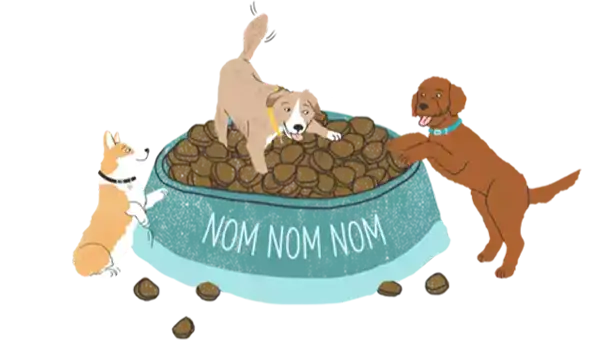While flowers, candy hearts, and chocolate are popular Valentine's Day gifts for humans, they are not appropriate for your four-legged loved one. Chocolate is especially dangerous and can even be deadly to dogs as it contains theobromine, a chemical that belongs to the class of chemicals that also includes caffeine. As an alternative to chocolate, this recipe calls for carob — a tropical Caribbean pod that tastes very similar to chocolate but is considered safe for dogs.
All you “knead” is love and a few ingredients to make these carob treats for dogs.
Ingredients
- ¼ cup carob chips
- ½ cup unsalted peanut butter (be sure it doesn't contain artificial sweeteners like xylitol)
- 4 cups whole wheat flour
- 2 cups quick-cooking oats
- 2 ½ cups warm water
- Heart-shaped or holiday-inspired cookie cutters
Instructions
- Preheat your oven to 350℉.
- Combine peanut butter, flour, oats, and water into a large bowl and mix well.
- Once dough forms, knead it on a lightly floured surface until firm. Tip: Add a little water if the dough is too sticky to handle.
- Roll the dough out to about an inch in thickness and cut out shapes using your cookie cutters or a small knife.
- Bake for 40 minutes, then turn off the heat and let the treats stay in the oven until they harden (about 1 to 2 hours).
- Prepare your carob chips by melting them in a double broiler (or other indirect heat source) while stirring occasionally.
- Once the treats have cooled, dip them into the melted carob and place on a cooling rack until carob hardens.
This article contains recipe information that is considered suitable for pets. However, not all pets can tolerate different foods — it depends on their age, health history, and health conditions. Carob in large amounts has a laxative effect in dogs, so you should only give your dog this treat in small amounts — which should be less than 10% of their daily food. It is important to consult with your veterinarian before feeding your pet any new foods or offering your pet any of the ingredients contained in this recipe.
ZPC-01035R1



